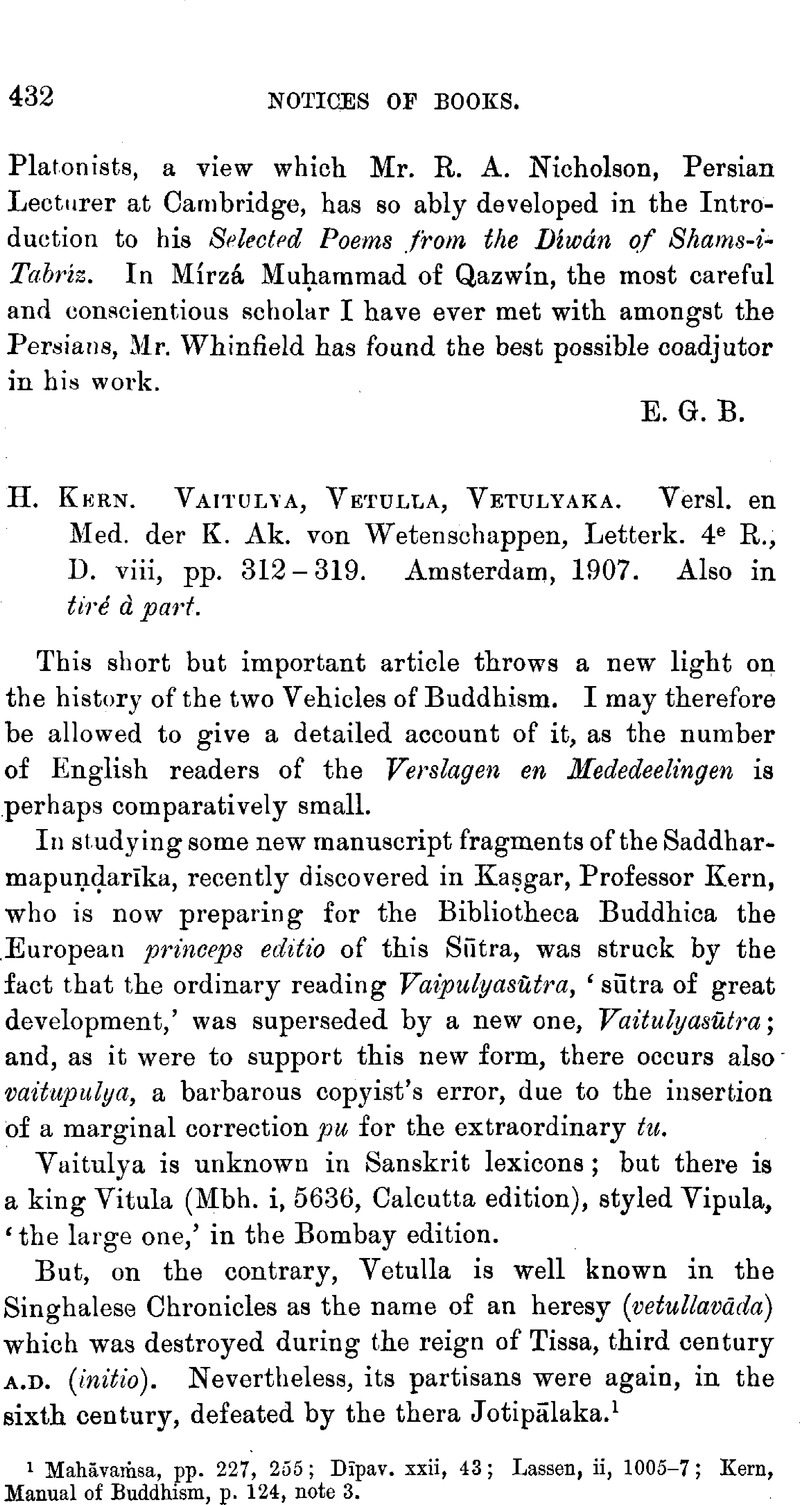No CrossRef data available.
Published online by Cambridge University Press: 15 March 2011

page 432 note 1 Mahāvarṁsa, , pp. 227, 255;Google ScholarDïpav, . xxii, 43;Google ScholarLassen, , ii, 1005–7;Google ScholarKern, , Manual of Buddhism, p. 124, note 3.Google Scholar
page 433 note 1 xviii, 1.2.
page 433 note 2 It is said in the Bodhisattvabhūmi (Camb. Add. 1702, fol. 40a): tatra dvādaśāngād. … yad vaipulyaṁ tad bodhisattvapiṭakam, avaśiṣṭaṁ śrāvakapiṭakam = “Amongst the twelve divisions of the Scripture, the ‘very developed one’ ![]() is the Basket of the Bodhisattvas (i.e. the canon of the Great Vehicle); the remaining ones are the Basket of the Śrāvakas (i.e. the canon of the Arhats, the Books of the Little Vehicle).” It follows that Vaipulyavāda, Vetullavāda is a good name for Mahāyānavāda.
is the Basket of the Bodhisattvas (i.e. the canon of the Great Vehicle); the remaining ones are the Basket of the Śrāvakas (i.e. the canon of the Arhats, the Books of the Little Vehicle).” It follows that Vaipulyavāda, Vetullavāda is a good name for Mahāyānavāda.
On the twelve aṅgas and the two Vehicles see Kern, Man., p. 7,Google Scholar and sources quoted (one may add that there is a Sarvavaidalyasaṁgraha, M. Vyut., § 65, 60); Schiefner, Mél. As., viii, 571 (vaipulya = “eine ausführliche Darlegung des Sinnes, according to the Mahāsāṁghikas; others explain the phrase otherwise”); Müller, Max, translation of Sukhāvatī, S.B.E. xlix, pp. 102–3;Google Scholar and ibid., Takakusu, , p. 188, n. 1.Google Scholar
page 434 note 1 Compare Mahāparinibbāna, v, 38–40.Google Scholar
One may add that the Vetulyakas seem to be adherents of the ‘Great Voidness’ (Kathār. A. xvii, 6); that they depreciate the Saṁgha, the gifts to the Saṁgha, etc. (xvii, 6 f.); that they seem to approve of some rite of maithuna or, à tout le moins, of the married life (xxiii, 1). And all these details have some Mahāyanist tinge, and could be traced in the list of heretical views given by Vasumitra.
Further, the Vetulyakas are not named amongst the eighteen schools: thus we are led to believe that Professor Kern is right; and we shall formulate the conjecture that Vetulyaka is perhaps a kind of sobriquet, ‘the people with large (and empty) sūtras.’